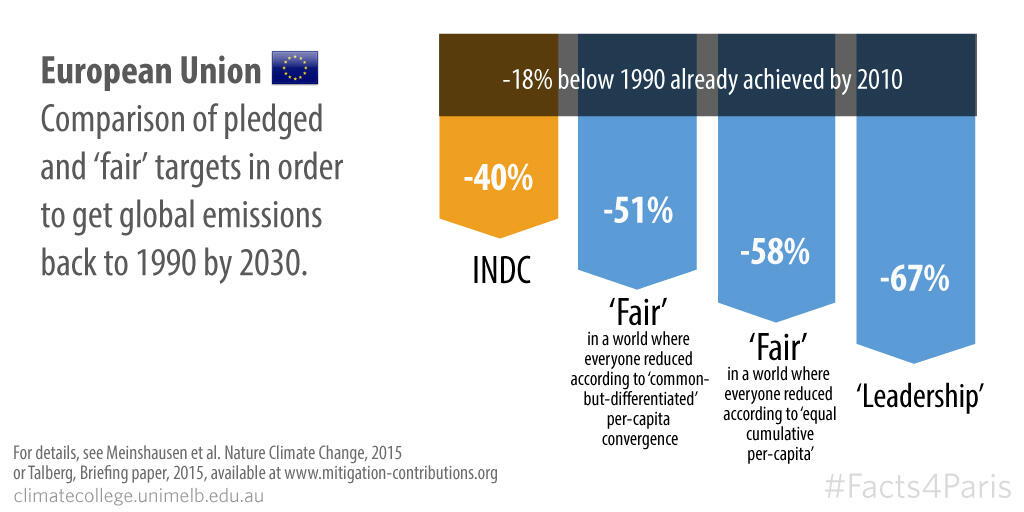Facts4Paris: EU INDC does not meet 'fair share' nor 'leadership' criteria.

The EU has long been regarded a leader in international climate policy. However, with some internal voices putting up barriers (Poland, for example), this may be a thing of the past.
The EU 20% target by 2020 has basically been achieved. This is great in terms of past achievements! However, future ambitions are not so progressive.
We compared the EU's 2030 target of 40% below 1990 emission levels against various criteria (in line with our assumptions for a 2°C target):
- In a world where everybody converges towards the same per-capita emissions level in the future (but nations with lower-than world-average emissions take some extra time to do so) the EU's 'fair' target would be 51% below 1990 levels.
- In a world where historical emissions are recognised and thus everybody converges towards the same cumulative per-capita emissions—an approach favoured by China and India—the EU's 'fair' target is at least a 58% below 1990 levels.
- Lastly, if the EU wants to reclaim the status of 'climate leader' in such a way that every other nation could follow the EU example (setting their own climate targets correspondingly but with their own understandings of 'fairness') the EU's target needs to be 67% below 1990 levels.
Clearly there is some way to go!
Yet there is hope...after all, the 'i' in INDCs stands for 'intended'.
Based on assumptions and methods outlined in this paper and explained in this Briefing Note.